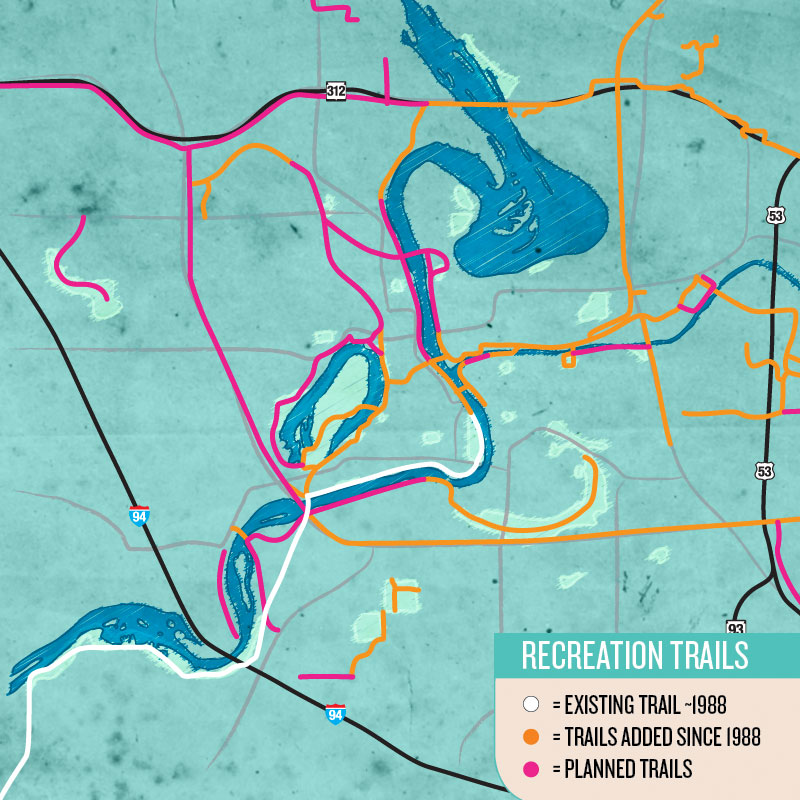The First Wave
the strides we’ve made in recent decades
If you look back in the history books to find out when the Chippewa Valley realized that its waterways were important, it’s actually pretty clear. We’re not talking about the very start of the city, when development was directly dictated by river travelers and the lumber industry. We’re talking about the re-discovery of their importance. For several decades – and following a national trend – cities turned their backs on the rivers and lakes, expanding outward and away from them. The proverbial new chapter in the history book, when we realized our negligence and started doing something about it, was the 1980s. That’s when city officials began writing in plans that our waterways deserve better.

Following the Waterways Plan in 1988, the city outlined hopes for a future Eau Claire in which trails, green spaces, and parks surrounded our lakes and rivers. In the two decades that followed, they’ve made some impressive strides along those very lines. The no-brainer is Phoenix Park, for which they took a blighted industrial area and made an award-winning crown jewel of the city at its most defining geological location (the confluence). Though we take it for granted now, the closing of First Avenue north of West Grand Avenue to create a pedestrian and bike trail along the river in Historic Randall Park Neighborhood was a controversial one, but now it’s a point of pride.
Around the same time, they decided to close down the Grand Avenue bridge for pedestrian-scale activity instead of cars. And a few blocks down the road, there’s the picturesque old railroad bridge as well. The city acquired numerous riverfront properties in this time, some to extend the trail system, some to eliminate blight, and a few hoping for future development. According to Fieber, when things got rolling after 1988, the only bike trail through the city at that point was basically the State Trail from Short Street to the city center, then on up towards Chippewa Falls. Since then, the system has been fleshed out to include nearly 21 miles of trails, many of which are right along the rivers.
“These are things we’ve done well,” Fieber said. “What we haven’t done is create vistas, make canoe and kayak launches, and add fishing access. But these are things I’m hoping will come in the near future.”




















